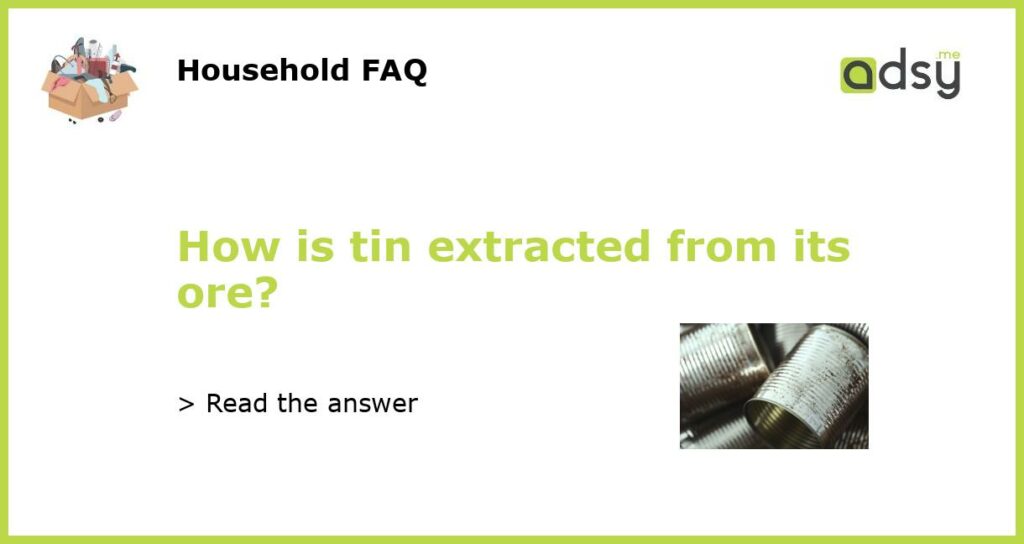Understanding Tin Extraction
Tin is a chemical element with the symbol Sn and atomic number 50, commonly known as “stannum” in ancient times. It is a silvery-white metal that is malleable, ductile, and highly resistant to corrosion, making it widely used in various industries. However, before tin can be utilized in manufacturing products, it needs to be extracted from its ore through a complex process.
The Properties and Occurrence of Tin Ore
Tin ore is classified as a “primary ore” due to its high content of the mineral cassiterite (SnO2). Cassiterite is the main compound of tin, and it usually forms in granite rocks as a result of hydrothermal activity. Tin ore deposits can also be found in alluvial deposits, where the particles are transported and deposited by water.
The mineral cassiterite has a brownish-black color and often appears as small granules or crystals. It has a high specific gravity, which allows it to be concentrated easily through mining techniques.
Mining and Concentrating Tin Ore
Tin ore extraction begins with open-pit or underground mining. In open-pit mining, the topsoil and vegetation covering the ore deposit are removed to expose the ore. The ore is then drilled, blasted, and extracted using heavy machinery. Underground mining is employed when the ore deposit is deeper.
Once the ore is extracted, it goes through a process called concentration. Concentration aims to separate the valuable minerals from the surrounding rock, gangue, and impurities. The most common method of concentration is known as gravity separation, where the ore is crushed and then fed into a series of shaking tables or spirals. The heavy tin particles settle to the bottom, while the lighter gangue is washed away.
Smelting and Refining Tin
After concentration, the tin-containing concentrate is further processed through smelting and refining. Smelting involves heating the concentrate with carbon or limestone in a furnace to chemically separate the tin from the other impurities.
During smelting, the carbon or limestone reacts with the cassiterite, reducing it to tin metal while leaving behind other impurities as slag. The molten tin is then tapped from the furnace and cast into ingots or further processed for specific applications.
The refining process is carried out to remove any remaining impurities in the tin metal. It may involve further heating, chemical reactions, or electrolysis to purify the tin and achieve a desired level of purity. The final product is commonly referred to as “commercial tin.”
Environmental Considerations in Tin Extraction
While tin extraction is essential for various industries, it is important to consider its environmental impact. Mining and processing tin ore can result in the disturbance of ecosystems, deforestation, and the release of potentially harmful chemicals into the environment.
Many mining companies are now implementing responsible mining practices to minimize their environmental footprint. These practices include reforestation, land rehabilitation, using environmentally friendly chemicals, and promoting the recycling and reuse of tin.
Furthermore, alternative methods of tin extraction, such as hydrometallurgy and bioleaching, are being researched and developed to reduce the reliance on traditional smelting processes.
In conclusion, tin extraction involves a series of processes from mining and concentrating the ore to smelting and refining the metal. Understanding these processes and their environmental considerations is crucial for sustainable tin production.






